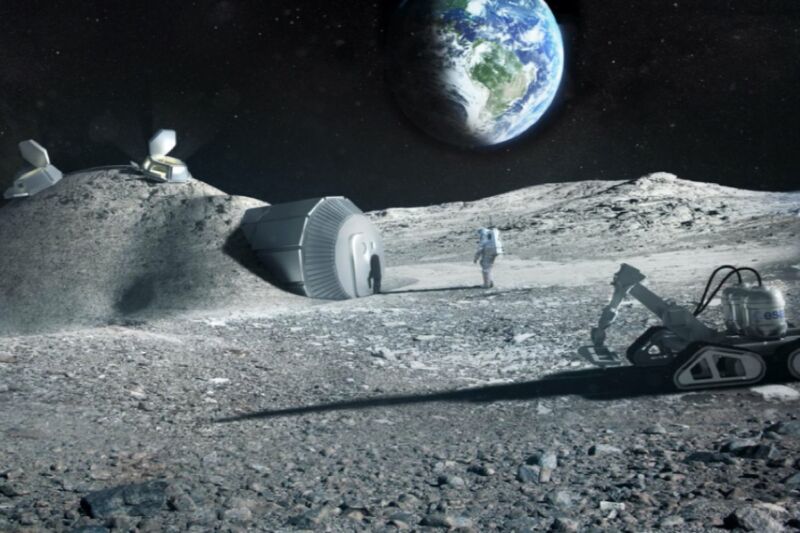
Enlarge / Future moon bases could be built with 3D printers that mix materials such as Moon regolith, water, and astronauts’ urine. (credit: ESA/Foster and Partners)
Early last year, NASA announced an ambitious plan to return American astronauts to the Moon and establish a permanent base there, with an eye toward eventually placing astronauts on Mars. The Artemis Moon Program has its share of critics, including many in the US House of Representatives, who appear to prefer a stronger focus on a crewed mission to Mars. As Ars' Eric Berger reported last August, "NASA stands a very real risk of turning the Artemis Program into a repeat of the Apollo Program—a flags-and-footprints sprint back to the Moon with no follow-through in the form of a lunar base or a sustained presence in deep space."
But if the Artemis Program's ambitious objectives survive the appropriations process, materials science will be crucial to its success, particularly when it comes to the materials needed to construct a viable lunar base. Concrete, for instance, requires a substantial amount of added water in order to be usable in situ, and there is a pronounced short supply of water on the moon. In a new paper in the Journal of Cleaner Production, an international team of scientists suggests that astronauts setting up a base on the moon could use the urea in their urine as a plasticizer to create a concrete-like building material out of lunar soil.
There's certainly a strong argument to be made for using existing materials on the Moon itself to construct a lunar base. NASA estimates that it costs around $10,000 to transport one pound of material into orbit, according to the authors. Past proposals have called for 3D printing with Sorel cement, which requires significant amounts of chemicals and water (consumables), and a rocklike material that would require both water and phosphoric acid as a liquid binder. (The latter might be better suited to constructing a base on Mars.)
No comments:
Post a Comment